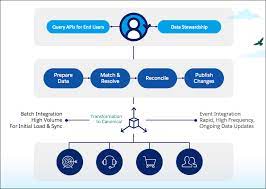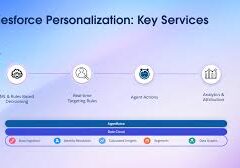Customer 360 Data Model
The Salesforce Customer 360 Data Model simplifies data integration across cloud applications by providing standardized guidelines. This model allows for the creation of data lakes, generation of analytics, training of machine-learning models, and building a unified view of the customer.
Organization into Subject Areas
The model is organized into various subject areas, each representing a significant business activity such as customer information, product data, or engagement data. Each subject area is comprised of Data Model Objects (DMOs).
A DMO is a view of your data imported into Data Cloud from data streams, insights, and other sources. DMOs use attributes (fields) to organize data in specific and meaningful ways. The term “DMO” can refer to either the Salesforce-created and managed schema for a DMO or an instance of a DMO in an organization based on that schema.
Types of DMOs
Multiple types of DMOs can be created and used within an organization:
- Standard DMOs: Created based on a schema DMO, inheriting its name, shape, and semantics.
- Custom DMOs: Created and defined directly within an organization for specific features in Data Cloud.
Data Mapping and Integration
Data imported into Data Cloud must be mapped to a DMO before it can be used for segmentation, activation, analytics, or other operations. To start mapping data, add a connected data source to Data Cloud. After connecting a source, Data Cloud allows you to create mapping sets between objects and fields within it and the Customer 360 Data Model.
For more detailed information about DMOs and other object types used in Data Cloud, refer to Data Objects in Data Cloud.
Data Relationship Diagram
The Customer 360 Data Model connects disparate data by linking DMOs through relationships. Here’s the full data relationship diagram for the Customer 360 Data Model.
Subject Area Diagram
For an overview of the data model, you can view the Overview Data Model on the Salesforce Architect page.
To further explore this topic, review the associated Trailhead module: Customer 360 Data Model for Data Cloud.
Data Model Subject Areas
Learn more about the different subject areas within Data Cloud:
Individual and Contact Points
When using the Customer 360 Data Model, Data Cloud prepares a list of Salesforce-published objects, fields, metadata, and relationships to ensure consistency across applications and business processes. Individual and contact point objects are crucial for successful and complete data streams.
For more detailed diagrams and information, visit the Salesforce Architect page and explore the related Trailhead module.













